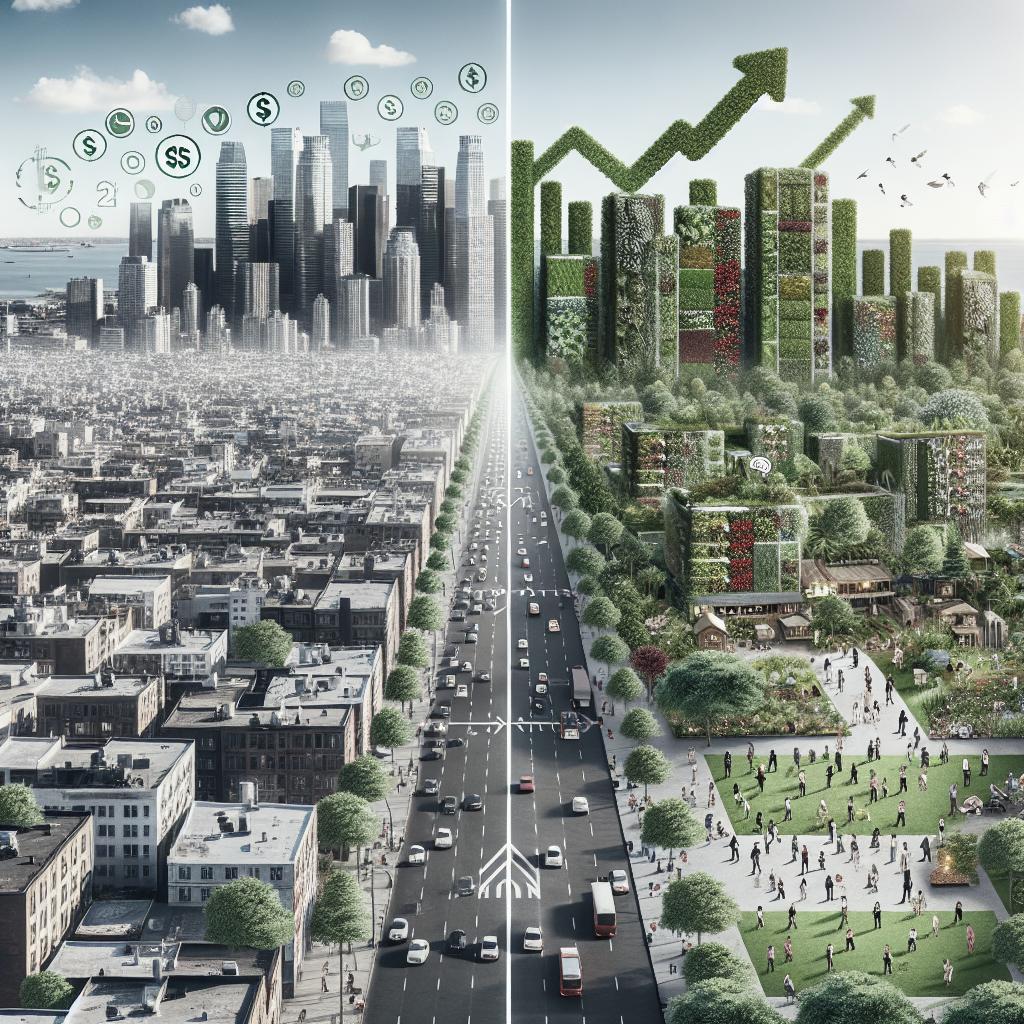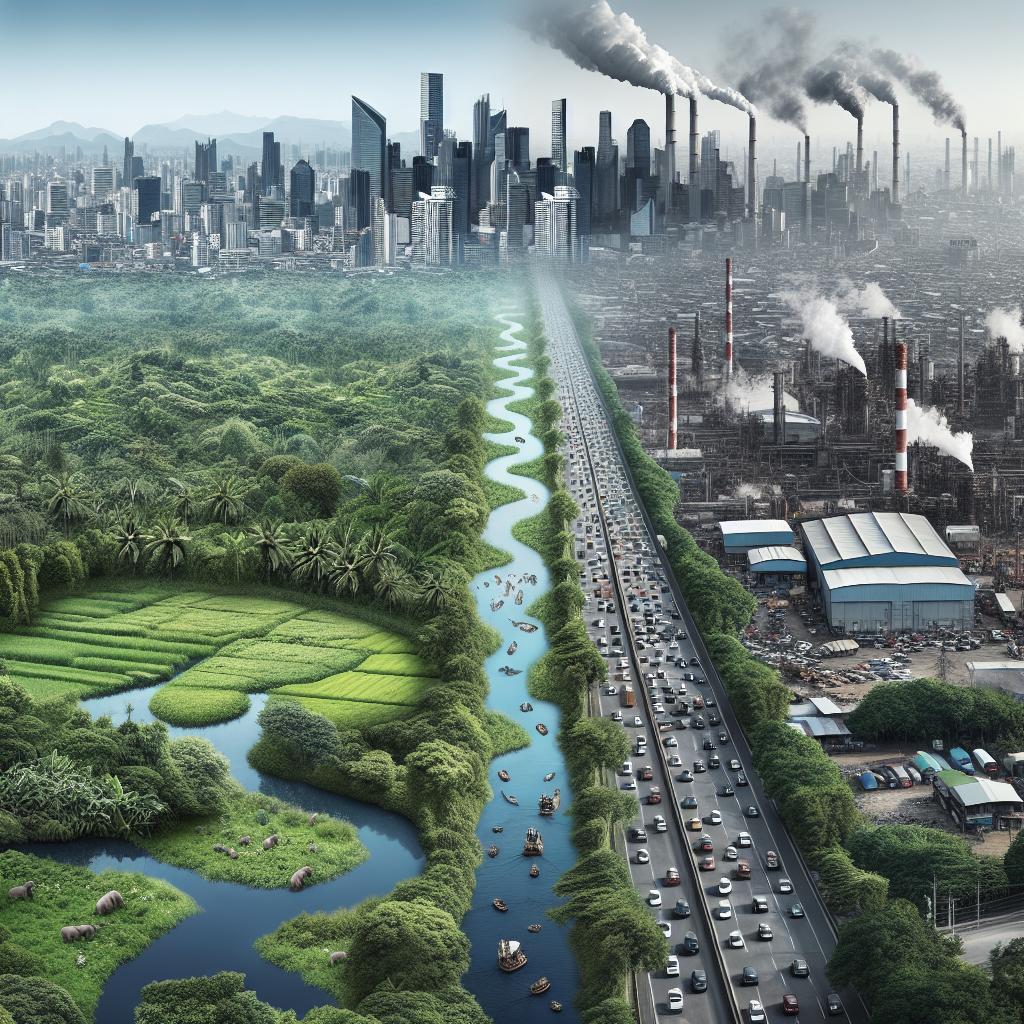<>
“`
Economic Impacts of Urban Greening
Urban greening initiatives—such as the creation of parks, green rooftops, and community gardens—are rapidly becoming a focus of modern city planning. These initiatives bring immeasurable benefits to the environment and public health, but they also have notable economic impacts. This blog post examines the multifaceted economic ramifications of urban greening under different lenses: elite financial capture, green gentrification, and the quest for socially just financing practices. We’ll also explore the broader implications of these initiatives, the challenges they present, and possible future directions.
Elite Financial Capture of Urban Greening
Urban greening projects can attract significant financial investments, often prompted by the promise of increased property values and improved urban aesthetics. However, these investments frequently come from elite financial institutions and affluent individuals who have the means to fund large-scale projects. This process, sometimes referred to as “elite capture,” prioritizes profit over equitable access to green spaces. While the financial inflow can rapidly transform urban landscapes, it often caters to corporate interests rather than local community needs. Furthermore, the financial capture by elites redirects public funds towards prestigious projects located in already affluent neighborhoods, rather than areas in dire need of green spaces. This perpetrates an imbalance, making environmental amenities more accessible to wealthier populations. As a result, economic inequalities are not only perpetuated but are also visibly marked by the disparity in green cover across different urban sectors.
Green Gentrification Deepens Urban Injustices
The creation of green spaces often leads to a phenomenon known as “green gentrification,” where increased property values and living standards consequentially marginalize lower-income residents. As urban greening projects make neighborhoods more desirable, property prices and rents skyrocket, forcing long-standing residents to move out. Here, the economic benefits of urban greening are skewed, profiting property owners and developers while displacing vulnerable communities. Green gentrification not only deepens existing urban injustices but also fosters resistance within marginalized communities. The displaced residents often relocate to areas with fewer amenities and green spaces, exacerbating socioeconomic divides. Consequently, the very communities that could benefit the most from urban greening are left without access, highlighting a critical flaw in the current implementation of green projects.
Moving Towards More Socially Just Urban Greening Financing Practices
Addressing the economic disparities created by urban greening requires a reformation in financing practices. Prioritizing social equity involves channeling public funds and incentives to marginalized neighborhoods in need of environmental improvements. Participatory budgeting, where community members have a say in how public funds are allocated, can ensure that projects meet local needs and offer equitable benefits. Furthermore, innovative financing models like green bonds and community land trusts can democratize the funding process. Green bonds can attract investments specifically aimed at sustainability projects, whereas community land trusts allow communities to have control over land development. By incorporating social equity into financial models, we can mitigate the adverse economic impacts of urban greening and create inclusive, sustainable urban environments.
References
[Insert references related to economic impacts of urban greening, green gentrification, and equitable funding practices]
Acknowledgements
We would like to thank the numerous urban planners, community activists, and financial experts who provided insights into the economic impacts and equitable approaches to urban greening.
Author information
Authors and Affiliations
Lucas Martin, Freelance Journalist.
Contributions
Lucas Martin wrote, edited, and researched the content of this article.
Corresponding author
Correspondence to Lucas Martin. Email: [email@example.com]
Ethics declarations
Competing interests
The author declares no conflicting financial or personal interests.
Additional information
For any additional information regarding this article, please contact the corresponding author.
Rights and permissions
Reprint and permission information are available through the corresponding author upon request.
About this article
Cite this article
Martin, L. (2023). What are the economic impacts of urban greening. [Website Name].
Share this article
[Insert social media sharing links]
This article is cited by
[Add citations details when available]
Subjects
Urban Planning, Sustainable Development, Economic Equity
Future Prospects
| Aspect | Challenges | Solutions |
|---|---|---|
| Elite Financial Capture | Resource diversion to affluent areas | Equitable investment strategies |
| Green Gentrification | Displacement of low-income residents | Affordable housing initiatives |
| Financing Practices | Lack of community involvement | Participatory budgeting, green bonds |
“`


